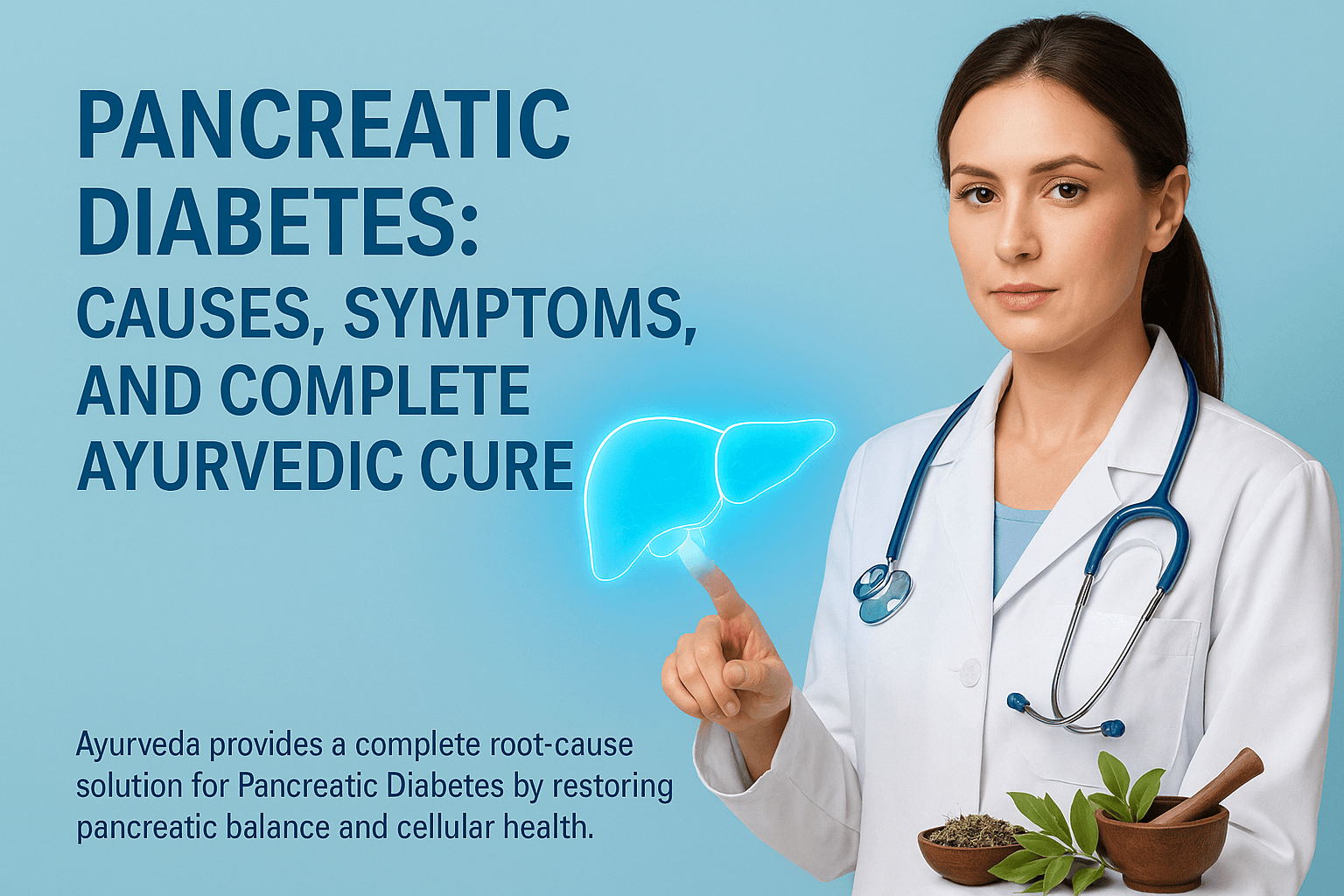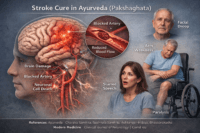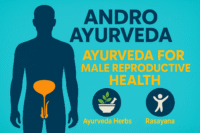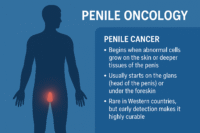- Distinction from Type 1 and Type 2 Diabetes
- Epidemiology and Global Prevalence
- Importance of Early Recognition and Holistic Management
- Pathophysiology
- Clinical Features
- Diagnosis
- Complications
- Management
- Avaleha to Cure Pancreatic Diabetes (Type 3c Diabetes)
- Frequently Asked Questions (FAQs)
- Reference
Type 3c Diabetes Mellitus, also known as Pancreatogenic Diabetes, arises from diseases that damage the pancreas, such as chronic pancreatitis, pancreatic cancer, cystic fibrosis, or pancreatic surgery. It involves both endocrine failure (loss of insulin and glucagon secretion) and exocrine insufficiency (digestive enzyme deficiency) [42]. This dual impairment causes malnutrition, unstable glucose levels, and metabolic derangement, making it clinically distinct from other diabetes types.
Distinction from Type 1 and Type 2 Diabetes
Type 1 diabetes is autoimmune in origin, while Type 2 results primarily from insulin resistance and obesity. In contrast, Type 3c diabetes occurs secondary to structural pancreatic damage, leading to simultaneous endocrine and digestive dysfunction [55]. Patients often exhibit low insulin, glucagon, and pancreatic polypeptide levels [61], which heightens the risk of hypoglycemia during treatment [48]. Because its symptoms overlap with Type 2 diabetes, many cases remain misdiagnosed [42].
Epidemiology and Global Prevalence
Globally, 5–10 % of diabetes cases are estimated to be Type 3c, yet most remain unrecognized [44]. In chronic pancreatitis patients, prevalence can exceed 70 % depending on disease severity and duration [61]. Studies suggest that nearly one in three Type 2 diabetes diagnoses may actually represent unrecognized pancreatogenic diabetes [55]. Underdiagnosis leads to inadequate enzyme therapy, poor glycemic control, and accelerated pancreatic decline [48].
Importance of Early Recognition and Holistic Management
Early diagnosis is vital to prevent irreversible pancreatic damage, nutrient deficiency, and metabolic instability [44]. Conventional therapy focusing only on insulin fails to correct the digestive and absorptive dysfunction central to the disease. Ayurveda describes this as Agnimandya (weakened digestive fire) and Prameha (metabolic derangement due to Kapha–Pitta imbalance), emphasizing correction of Agni and restoration of Ojas [72]. A combined strategy—integrating modern diagnostics with Ayurvedic Rasayana and detoxification therapy—offers a root-cause approach to restoring pancreatic function and stabilizing metabolism [73].
Pathophysiology
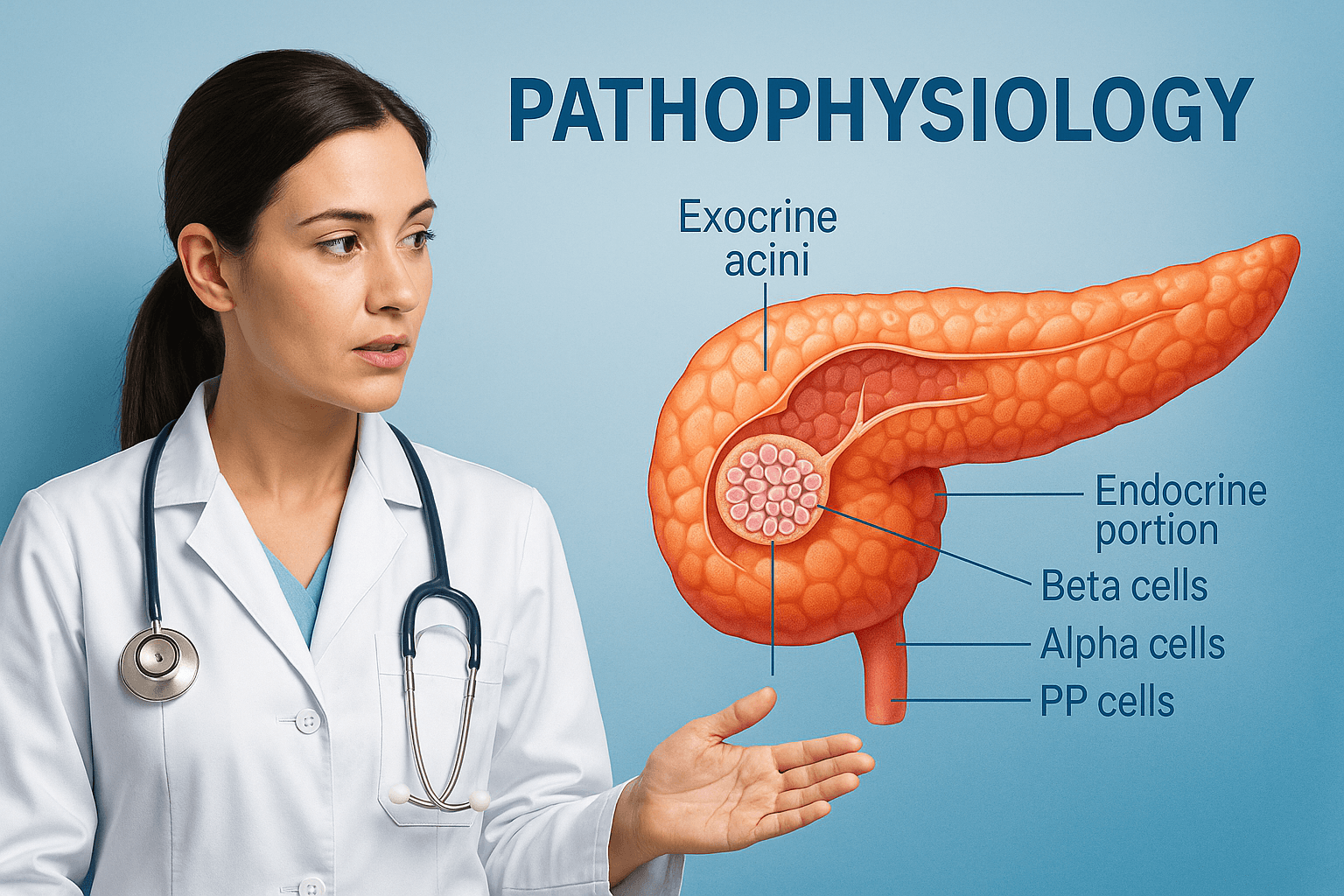
Anatomical and Functional Overview of the Pancreas
The pancreas functions as both an exocrine and endocrine gland. The exocrine portion, composed of acinar and ductal cells, secretes digestive enzymes such as amylase, lipase, and proteases that aid in nutrient digestion [44]. The endocrine portion contains the islets of Langerhans, which include four primary cell types: beta cells producing insulin, alpha cells producing glucagon, delta cells producing somatostatin, and PP cells producing pancreatic polypeptide [61]. In Pancreatic Diabetes or Type 3c Diabetes, both the endocrine and exocrine units are impaired, causing disturbances in glucose metabolism and digestion [42].
Mechanism of Pancreatic Damage Leading to β-Cell Destruction and Insulin Deficiency
In Type 3c Diabetes, prolonged inflammation, fibrosis, or necrosis damages pancreatic tissue, commonly due to chronic pancreatitis, trauma, or tumor infiltration [55]. Continuous inflammation leads to loss of beta-cell mass and reduced insulin secretion. Damage to acinar cells also disrupts enzyme production, resulting in maldigestion and nutrient deficiency, which further weaken beta-cell function [61]. Ayurveda describes this condition as Agnimandya or weakened digestive fire, and Pittaja Prameha, a metabolic disturbance caused by deranged Pitta that leads to depletion of Dhatus and Ojas [72].
Role of Glucagon Deficiency, Pancreatic Polypeptide Deficiency, and Malabsorption
Unlike Type 1 and Type 2 Diabetes, Type 3c involves alpha-cell dysfunction, leading to decreased glucagon secretion [48]. This reduction impairs the body’s ability to counter hypoglycemia. Loss of pancreatic polypeptide contributes to hepatic insulin resistance and disordered gastrointestinal motility [44]. Exocrine insufficiency results in fat malabsorption, deficiencies of vitamins A, D, E, and K, and steatorrhea. The combination of insulin deficiency, glucagon deficiency, and malabsorption causes erratic blood glucose fluctuations [61]. In Ayurvedic understanding, this reflects vitiation of Pitta and Vata, where weakened Pitta disturbs digestion and aggravated Vata causes irregular absorption and circulation of glucose [72].
Comparison of Insulin Resistance Patterns with Type 2 Diabetes
In Type 2 Diabetes, insulin resistance is the primary defect, while pancreatic function is initially preserved. In Type 3c Diabetes, insulin deficiency is the predominant factor with mild to moderate insulin resistance secondary to inflammation or nutritional deficiency [55]. Hepatic insulin resistance in this condition arises partly due to loss of pancreatic polypeptide and fatty infiltration in the liver caused by exocrine failure [48]. Consequently, patients experience unstable glycemic patterns rather than persistent hyperinsulinemia, which is typical of Type 2 Diabetes [44].
Oxidative Stress and Inflammatory Cytokine Involvement
Chronic pancreatic inflammation generates reactive oxygen species that cause oxidative stress and tissue injury. Cytokines such as TNF-α, IL-1β, and IL-6 contribute to beta-cell apoptosis and impaired insulin signaling [61]. Elevated oxidative markers and reduced antioxidant enzyme activity have been documented in Type 3c patients, highlighting the role of inflammation and oxidative injury in disease progression [55]. Ayurveda explains this as accumulation of Ama Dosha, or toxic metabolic residue, due to poor Agni leading to obstruction of microchannels and impaired tissue nourishment [73]. Rasayana herbs including Amalaki, Guduchi, and Haridra have been found beneficial in restoring cellular metabolism and reducing oxidative stress [72].
Clinical Features
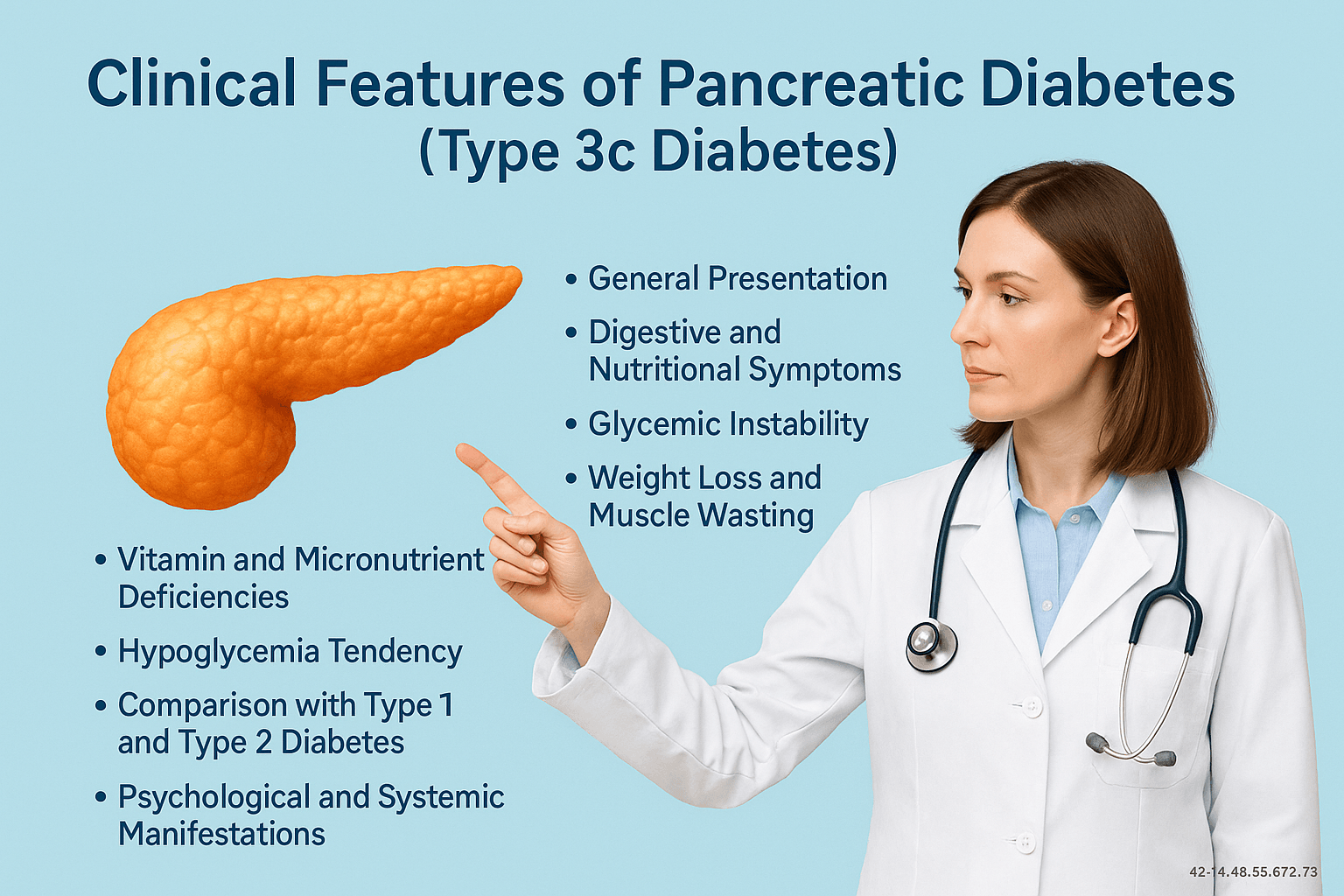
General Presentation
Pancreatic Diabetes, or Type 3c Diabetes, develops gradually, often following years of pancreatic inflammation or damage [44]. Unlike Type 1 diabetes, where symptoms appear suddenly, or Type 2 diabetes, where obesity and insulin resistance dominate, Type 3c arises with subtle metabolic changes and digestive symptoms due to concurrent exocrine failure [42]. Patients often report fatigue, unintentional weight loss, bloating, and fluctuating glucose levels that are difficult to stabilize despite dietary compliance [61]. In Ayurveda, this corresponds to Agnimandya and Dhatukshaya, where poor digestive fire and tissue depletion cause loss of strength and vitality [72].
Digestive and Nutritional Symptoms
Because exocrine insufficiency accompanies endocrine failure, patients experience malabsorption, steatorrhea, and chronic diarrhea [61]. Fat-soluble vitamin deficiencies (A, D, E, and K) are common, leading to brittle nails, dry skin, bone pain, and poor wound healing. Abdominal distension, flatulence, and undigested food particles in the stool are characteristic signs of exocrine dysfunction [44]. Ayurvedic texts describe similar manifestations under Ajeerna and Ama Sanchaya, where incompletely digested food forms toxic metabolic residue that circulates throughout the body, disturbing Dosha balance and tissue nourishment [72].
Glycemic Instability
Patients with Type 3c Diabetes often experience wide fluctuations in blood glucose levels — alternating between hyperglycemia and hypoglycemia [48]. The absence of glucagon secretion from alpha cells impairs counter-regulatory mechanisms, while malnutrition limits hepatic glycogen reserves. This makes glucose variability a hallmark feature, and standard insulin doses may cause unpredictable drops in blood sugar [55]. Ayurveda interprets this instability as an Avarana condition, where aggravated Pitta and Kapha obstruct the normal flow of Vata, producing irregular metabolic rhythms [73].
Weight Loss and Muscle Wasting
Continuous nutrient malabsorption and inadequate insulin supply cause progressive weight loss and muscle wasting [61]. In advanced cases, cachexia develops, accompanied by low serum protein and fat levels. From the Ayurvedic viewpoint, this reflects Mamsa Dhatu Kshaya and Ojakshaya, where tissue depletion weakens structural integrity and immune resistance [72]. Rejuvenation through Rasayana herbs such as Ashwagandha, Shatavari, and Amalaki helps rebuild Dhatus and restore metabolic strength [73].
Vitamin and Micronutrient Deficiencies
Deficiency of vitamin D and calcium is common in Type 3c patients due to poor fat absorption [61]. Secondary hyperparathyroidism and osteopenia may result, increasing fracture risk. Deficiency of vitamin B12 is also observed because of impaired intrinsic factor activity. These deficiencies contribute to fatigue, neuropathy, and low mood. Ayurveda identifies these symptoms as depletion of Tejas and Prana, indicating low metabolic vitality and reduced Ojas [72].
Hypoglycemia Tendency
Due to loss of glucagon response and impaired hepatic glucose production, hypoglycemia episodes are more frequent and severe [48]. Patients may feel dizziness, sweating, confusion, and even fainting. The risk increases with insulin therapy or skipped meals. Ayurveda advises balancing Agni through light meals and Rasayana therapy to maintain stable energy flow and prevent Vata aggravation [73].
Comparison with Type 1 and Type 2 Diabetes
Clinically, Type 3c Diabetes shows features of both Type 1 and Type 2 but remains distinct in its pathogenesis [42]. Like Type 1, there is insulin deficiency, yet autoimmune markers are absent. Like Type 2, mild insulin resistance and metabolic syndrome can coexist, but exocrine dysfunction and nutritional deficiency make it unique. The combination of digestive and metabolic failure helps differentiate it when properly evaluated [44].
Psychological and Systemic Manifestations
Chronic fatigue, mood disturbances, and anxiety are frequent in Type 3c patients [55]. These stem from fluctuating glucose levels, nutritional imbalance, and chronic inflammation affecting brain neurotransmitters. Ayurveda attributes such symptoms to the aggravation of Vata in Majja Dhatu, which governs neural stability. Restoration of Majja balance through Rasayana herbs like Brahmi and Mandukaparni improves both mood and metabolic steadiness [72].
Diagnosis
Modern Diagnostic Criteria
Diagnosis of Pancreatic Diabetes requires identifying both the endocrine insufficiency that causes glucose dysregulation and the exocrine dysfunction that leads to maldigestion [44]. Standard diabetic tests such as fasting plasma glucose, oral glucose tolerance test, and HbA1c may confirm hyperglycemia but cannot differentiate Type 3c from Type 1 or Type 2 Diabetes [42]. Therefore, additional parameters are necessary.
Low serum C-peptide levels indicate insulin deficiency caused by β-cell loss [55]. Fecal elastase-1 and serum trypsinogen tests are used to assess exocrine function, with reduced values confirming pancreatic enzyme insufficiency [61]. Imaging studies such as CT scan, MRI, or Endoscopic Ultrasound help detect pancreatic calcification, fibrosis, or ductal irregularities suggestive of chronic pancreatitis [44]. In autoimmune cases, raised IgG4 levels help identify autoimmune pancreatitis [55].
Unlike Type 1 diabetes, autoimmune antibodies (GAD, IA-2, or ZnT8) are usually absent in Type 3c Diabetes. Similarly, insulin resistance markers such as elevated fasting insulin are typically mild or absent, distinguishing it from Type 2 Diabetes [61]. These findings together confirm the diagnosis of Pancreatogenic Diabetes when pancreatic disease, exocrine dysfunction, and diabetes coexist.
Biochemical Findings
Patients commonly show low or fluctuating insulin and glucagon levels, reflecting endocrine failure [48]. Fat malabsorption leads to low cholesterol, triglyceride, and vitamin D levels. Serum amylase and lipase may be reduced in advanced stages due to atrophic acinar tissue [61]. Many patients also present with mild anemia and low serum albumin due to chronic malnutrition [55].
Differential Diagnosis
Pancreatic Diabetes is frequently misdiagnosed as Type 2 Diabetes because both can present with gradual onset of hyperglycemia [44]. However, the presence of digestive symptoms, weight loss, and malabsorption should prompt further pancreatic evaluation. In Type 1 Diabetes, patients often have ketosis and positive autoimmune markers, which are absent in Type 3c [42]. The co-existence of steatorrhea or vitamin deficiencies should always raise suspicion for a pancreatic origin [61].
Ayurvedic Diagnostic Approach
Ayurveda diagnoses Pancreatic Diabetes through observation of Nidana Panchaka which includes causes, prodromal symptoms, disease characteristics, prognosis, and complications [72]. Signs of Agnimandya such as poor appetite, heaviness, and fatigue are key indicators. In advanced stages, Prameha Lakshanas such as excessive urination, sweetness of urine, and debility appear. Pulse (Nadi) examination often reveals a Kapha–Pitta dominant pattern, indicating metabolic obstruction with impaired digestion [73].
Tongue observation may show coating from Ama accumulation, and skin examination may reveal dryness and lack of luster due to Ojakshaya. The Ayurvedic clinician correlates these findings with the underlying Srotas affected, particularly Annavaha Srotas (digestive channel) and Rasavaha Srotas (nutrient transport channel) [72].
Integrative Diagnostic Approach
An integrated diagnostic model combines modern imaging and biochemical testing with Ayurvedic assessment of Dosha imbalance and digestive fire [73]. Identifying pancreatic insufficiency early allows for timely intervention with enzyme therapy and Rasayana treatment. This dual diagnostic approach not only classifies the disease accurately but also evaluates its root cause in both physical and energetic dimensions, ensuring a comprehensive treatment plan that addresses metabolism, digestion, and tissue health simultaneously [72].
Complications

Acute Complications
Pancreatic Diabetes patients are more prone to hypoglycemia because of the loss of glucagon secretion and impaired hepatic glucose production [48]. Even small doses of insulin can cause severe glucose drops, especially in those with poor food absorption or irregular meals. Episodes of dizziness, sweating, or fainting are frequent and require careful glycemic monitoring. Ayurveda describes this state as Avarana of Vata, where irregular energy flow and impaired Agni create instability in tissue metabolism [73]. Restoring digestive strength and stabilizing Agni are essential to prevent recurrent hypoglycemia [72].
Another acute concern is acute pancreatitis flare-ups, which may be triggered by alcohol, fatty meals, or infections [44]. These flare-ups further damage pancreatic tissue and worsen both endocrine and exocrine dysfunction. Ayurvedic management focuses on balancing aggravated Pitta through cooling and anti-inflammatory herbs such as Amalaki, Guduchi, and Musta to prevent recurrence [72].
Chronic Complications
Over time, Type 3c Diabetes can lead to microvascular and macrovascular complications similar to other forms of diabetes, including retinopathy, neuropathy, and nephropathy [61]. However, the pattern is often more severe due to malnutrition and oxidative stress. Chronic inflammation and vitamin deficiencies exacerbate nerve damage, producing burning sensations, tingling, and muscle weakness [55]. Ayurveda identifies these manifestations as Vata Vyadhi, or disorders caused by deranged Vata in Majja Dhatu, requiring nourishing Rasayanas such as Ashwagandha, Bala, and Yashtimadhu [73].
Nutritional Deficiencies
Exocrine insufficiency leads to persistent fat-soluble vitamin deficiency, particularly vitamins A, D, E, and K [61]. This results in poor bone mineralization, visual weakness, skin dryness, and delayed wound healing. Vitamin D deficiency and calcium loss increase the risk of osteoporosis and fractures [44]. In Ayurveda, these reflect Asthi Dhatu Kshaya and Majja Dhatu Kshaya, where structural tissue degeneration occurs due to chronic depletion of metabolic energy [72]. Correcting Agni and enhancing Dhatu Poshana with herbal formulations such as Guduchi, Shatavari, and Abhrak Bhasma can restore bone and marrow integrity [73].
Hepatic and Gastrointestinal Effects
Loss of pancreatic polypeptide and enzyme deficiency affect liver metabolism and bile secretion, leading to hepatic steatosis and sluggish digestion [48]. Patients may also experience gallstones, bloating, and abdominal heaviness. Ayurveda relates these findings to Annavaha Srotas Dushti and Kapha–Pitta aggravation, suggesting therapies like Virechana (purgation) and Deepana–Pachana (metabolic stimulation) to restore normal digestive flow [72].
Cardiovascular and Metabolic Risks
Malnutrition, oxidative stress, and chronic inflammation accelerate atherosclerosis and cardiovascular disease in Type 3c Diabetes [55]. Dyslipidemia, endothelial dysfunction, and vitamin deficiency further worsen vascular integrity. Antioxidant therapy and lipid-lowering Ayurvedic herbs such as Arjuna, Guggulu, and Haridra are useful in mitigating these risks [73].
Pancreatic Cancer Risk
Chronic pancreatitis and fibrosis increase the long-term risk of pancreatic carcinoma, especially in patients with long-standing inflammation [44]. Repeated injury and oxidative stress can trigger cellular transformation. Ayurveda views this as chronic Granthi or Arbuda formation due to prolonged Srotorodha and Ama accumulation [72]. Early detoxification (Shodhana) and Rasayana therapy act as preventive measures by cleansing the channels and improving tissue resistance [73].
Psychological and Emotional Complications
Chronic fatigue, anxiety, and depression are common among patients with Pancreatic Diabetes [55]. They arise from hormonal fluctuations, nutrient deficiencies, and long-term stress of disease management. Ayurveda recognizes this as Manasika Vyadhi arising from Vata–Pitta imbalance in Majja Dhatu and recommends medhya Rasayanas such as Brahmi, Shankhapushpi, and Mandukaparni to improve mood, cognition, and emotional resilience [72].
Management
Modern Medical Approach
Treatment of Pancreatic Diabetes focuses on addressing both endocrine and exocrine dysfunctions simultaneously [44]. The primary goal is to achieve stable glycemic control while ensuring proper digestion and nutrient absorption.
Insulin therapy is the mainstay because endogenous insulin secretion is significantly reduced [42]. A basal–bolus regimen or insulin pump is often required to maintain steady glucose levels. Sulfonylureas and other oral hypoglycemic agents are generally avoided because they can precipitate hypoglycemia due to absent glucagon response [48]. Metformin may be used in patients with mild hyperglycemia and preserved renal function but must be monitored closely [55].
Pancreatic enzyme replacement therapy (PERT) is essential to correct malabsorption and improve nutrient assimilation [61]. Enzymes containing lipase, amylase, and protease are administered with meals to restore digestive function. Fat-soluble vitamins A, D, E, and K must be supplemented to prevent nutritional deficiencies. Lifestyle modifications such as regular small meals, abstinence from alcohol, and avoidance of high-fat diets are necessary to reduce pancreatic stress [44].
Ayurvedic Approach
Ayurveda classifies this condition under Prameha caused by Agnimandya and imbalance of Kapha and Pitta [72]. Management is directed toward improving digestion, clearing Ama, and restoring metabolic balance through Shodhana (detoxification), Shamana (pacification), and Rasayana (rejuvenation).
Shodhana Therapy (Purification) includes Snehapana with medicated ghee such as Mahatikta Ghrita, followed by Virechana with herbal purgatives like Trivrit or Avipattikar Churna to eliminate vitiated Pitta and Kapha [73]. In chronic or severe cases, Basti therapy with medicated decoctions containing Dashamoola or Bala is advised to balance Vata and support pancreatic rejuvenation.
Shamana Therapy (Pacification) aims to regulate glucose metabolism and improve pancreatic activity. Herbs like Gudmar (Gymnema sylvestre), Meshashringi, Jambu Beej, and Shilajit enhance insulin secretion and receptor sensitivity [72]. Classical formulations such as Nisha Amalaki Avaleha, Chandraprabha Vati, and Vasant Kusumakar Ras are beneficial for restoring Agni, balancing Doshas, and preventing complications.
Rasayana Therapy (Rejuvenation) is the cornerstone of long-term management. Rasayanas like Swarna Bhasma, Abhrak Bhasma, and Amalaki Rasayana are used to restore Dhatu integrity, strengthen Ojas, and support pancreatic repair [73]. These formulations act as antioxidants, reduce inflammation, and improve cellular regeneration.
Dietary Management
Diet plays a central role in both modern and Ayurvedic approaches. A balanced diet with moderate carbohydrates, lean proteins, and healthy fats helps stabilize glucose levels [61]. Ayurveda recommends Pathya foods such as barley, green gram, amla, bitter gourd, and fenugreek that promote Kapha–Pitta balance [72]. Foods that are heavy, fried, or sweet should be avoided as they increase Ama and aggravate Kapha.
Meal frequency should be small and regular to prevent hypoglycemia. Herbal drinks like decoctions of Neem, Guduchi, and Triphala aid digestion and maintain glucose balance. In chronic cases, individualized dietary planning based on Prakriti (body constitution) and digestive capacity is crucial [73].
Lifestyle and Behavioral Modifications
Regular exercise, yoga, and meditation improve insulin sensitivity and reduce stress-induced glucose fluctuations [55]. Pranayama techniques such as Anuloma Viloma and Bhastrika help regulate the autonomic nervous system and support pancreatic oxygenation [73]. Adequate sleep and avoidance of alcohol and smoking are emphasized for long-term pancreatic protection.
Integrative Model of Care
A combined model integrating enzyme replacement, insulin therapy, and Ayurvedic Rasayana offers the most comprehensive results [44]. Modern monitoring tools such as continuous glucose monitors can be complemented by Ayurvedic assessment of Agni and Dosha states for individualized care. The integrative approach ensures both symptomatic relief and restoration of the pancreatic tissue, addressing the disease from its root [72].
Avaleha to Cure Pancreatic Diabetes (Type 3c Diabetes)
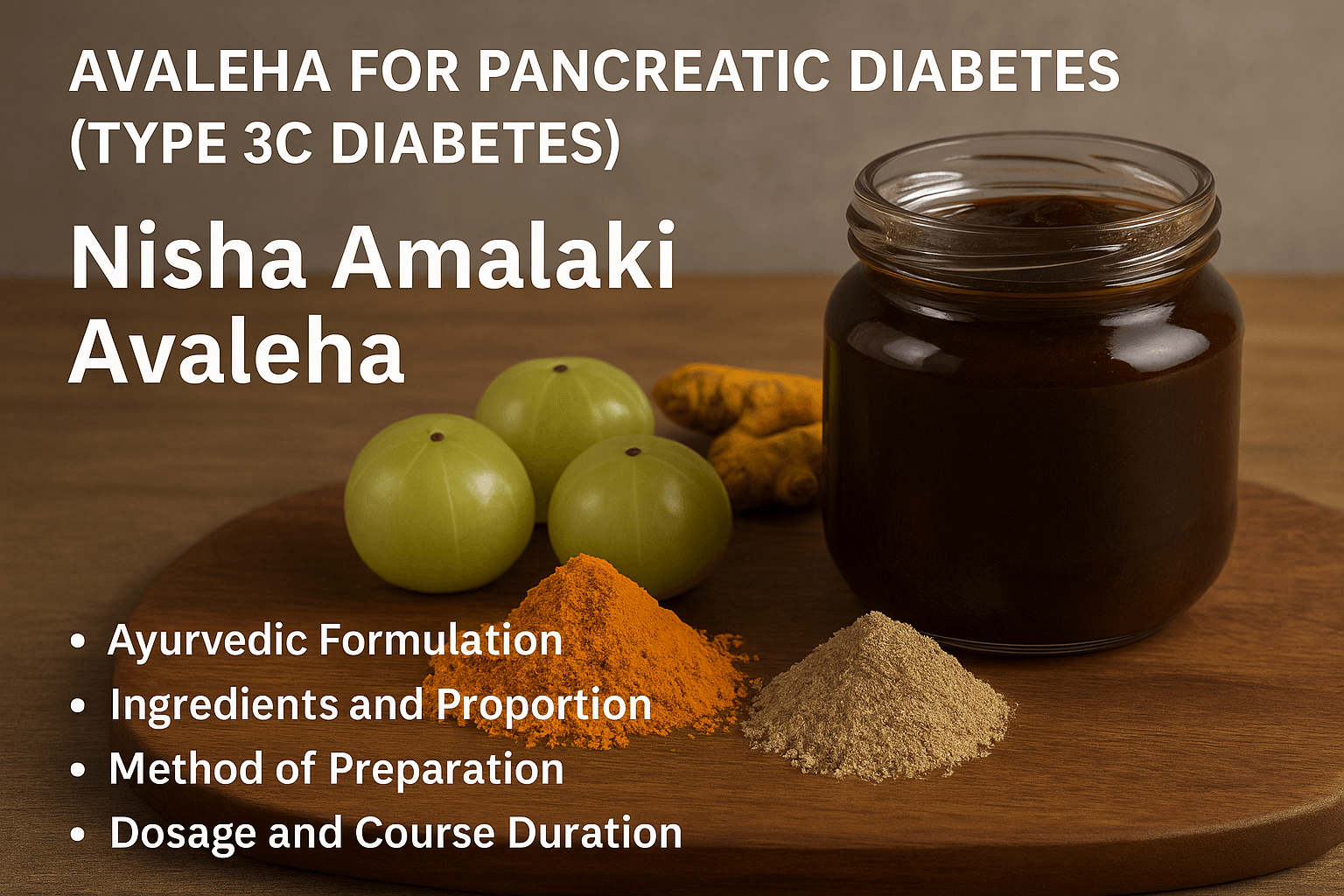
8.1. Name of the Formulation
The classical formulation indicated for Prameha and pancreatic disorders is Nisha Amalaki Avaleha, mentioned in Charaka Samhita (Chikitsa Sthana 6/54) and Bhavaprakasha (Madhyama Khanda, Prameha Chikitsa 15–16). This preparation is one of the most powerful Rasayana Avalehas for restoring Agni, balancing Kapha and Pitta, and rejuvenating pancreatic tissue affected by chronic inflammation [72].
8.2. Classical Reference
In the Ayurvedic texts, Nisha Amalaki is described as a divine combination that cures all types of Prameha (metabolic disorders). Charaka Samhita states that the regular use of this preparation restores strength, digestion, and vitality, thereby reversing long-standing metabolic defects [73]. The synergy between turmeric (Nisha) and amla (Amalaki) forms a powerful antioxidant and rejuvenative base, while Rasayana Bhasmas enhance pancreatic regeneration.
8.3. Purpose and Indications
This Avaleha is designed to address both the endocrine and exocrine components of pancreatic damage. It improves digestion, enhances insulin secretion, reduces oxidative stress, and prevents diabetic complications such as neuropathy and malnutrition [44]. Ayurvedically, it works on Agnimandya, Srotorodha, and Ojakshaya—the three major pathological foundations of Type 3c Diabetes [72].
Therapeutic indications include:
- Pancreatic Diabetes (Type 3c Diabetes Mellitus)
- Chronic pancreatitis with malabsorption
- Glucose instability and hypoglycemic episodes
- Loss of strength and tissue depletion (Dhatukshaya)
- Fatigue, poor digestion, and Ama accumulation
8.4. Ingredients and Proportion (for 30 Days)
The Avaleha is prepared using classical herbal and mineral Rasayanas in precise proportions to support a 30-day course.
Key ingredients:
- Nisha (Curcuma longa): 200 g
- Amalaki (Emblica officinalis): 200 g
- Gudmar (Gymnema sylvestre): 100 g
- Jambu Beej (Syzygium cumini): 100 g
- Meshashringi (Gymnema sylvestre): 80 g
- Shilajit (Purified Asphaltum): 50 g
- Swarna Bhasma (Gold calx): 500 mg
- Abhrak Bhasma (Mica calx): 2 g
- Trivanga Bhasma (Composite of Tin, Lead, Zinc): 2 g
- Vasant Kusumakar Ras: 1 g
- Go-Ghrita (Cow’s ghee): 250 mL
- Jaggery or raw honey (as per climate): 500 g
These ingredients are well-documented in Charaka Samhita and Bhavaprakasha Nighantu for their metabolic, Rasayana, and tissue-regenerative actions [72].
8.5. Method of Preparation
- Prepare a decoction of Nisha, Amalaki, Gudmar, and Jambu Beej by boiling them in eight times water until one-fourth remains.
- Filter the liquid carefully and heat it again over a mild flame.
- Add jaggery to the decoction and stir continuously until a syrup-like consistency is achieved.
- Add Go-Ghrita slowly while stirring to obtain the Avaleha base.
- Once the mixture cools below 40°C, incorporate all Bhasmas (Swarna Bhasma, Abhrak Bhasma, Trivanga Bhasma) and Vasant Kusumakar Ras.
- Mix thoroughly until uniform and store in a glass container away from sunlight and moisture.
This gentle preparation method preserves the potency of Rasayana minerals and prevents the loss of volatile components [73].
8.6. Dosage and Course Duration
Take 15 grams twice daily on an empty stomach with lukewarm water or as directed by a physician. The recommended course duration is 30 days. Continuous use under supervision may be extended for Rasayana effect to promote pancreatic rejuvenation [44].
8.7. Mechanism of Action (Ayurvedic and Modern Correlation)
According to Ayurveda, this Avaleha pacifies Kapha and Pitta, rekindles Agni, and restores balance to the Rasavaha and Annavaha Srotas. It removes Ama and supports the regeneration of pancreatic tissue.
From a modern biomedical perspective:
- Curcumin enhances insulin sensitivity and suppresses inflammatory cytokines [61].
- Amalaki provides vitamin C, antioxidants, and polyphenols that protect β-cells from oxidative damage [55].
- Gudmar and Jambu Beej exhibit insulin-mimetic effects and improve glucose utilization [72].
- Swarna and Abhrak Bhasma act as nano-mineral Rasayanas that stabilize mitochondrial energy production and support cellular repair [73].
- Vasant Kusumakar Ras enhances glucose metabolism and improves Ojas through rejuvenation of endocrine function [73].
Together, these actions align perfectly with Prameha Chikitsa Siddhanta, restoring both digestive and metabolic balance.
8.8. Precautions and Warnings
- The formulation should be taken under supervision of a qualified Ayurvedic physician.
- Not advised for children, pregnant, or lactating women.
- Dosage may vary based on individual Prakriti, digestive strength, and concurrent medications.
- Avoid refined sugar, dairy, and heavy meals during the treatment course.
- Skipping doses or irregular intake may disturb metabolic stability and reduce therapeutic efficacy [72].
Frequently Asked Questions (FAQs)
1. What is Pancreatic Diabetes?
Pancreatic Diabetes, also called Type 3c Diabetes, is a form of diabetes that develops due to damage or disease affecting the pancreas. It involves both endocrine dysfunction, leading to insulin deficiency, and exocrine dysfunction, leading to poor digestion.
2. How is Pancreatic Diabetes different from Type 1 and Type 2 Diabetes?
Type 1 Diabetes results from autoimmune destruction of beta cells, while Type 2 arises from insulin resistance. Pancreatic Diabetes occurs when the pancreas is structurally damaged, leading to both reduced insulin production and digestive enzyme deficiency.
3. What causes Pancreatic Diabetes?
The condition usually develops after chronic pancreatitis, pancreatic surgery, cancer, cystic fibrosis, or trauma. Long-term alcohol use, smoking, and malnutrition also increase risk.
4. Why is Pancreatic Diabetes often misdiagnosed?
Because its symptoms overlap with Type 2 Diabetes, many cases are incorrectly labeled as Type 2. Without recognizing the pancreatic origin, treatment may fail to correct the underlying problem.
5. How common is this condition globally?
Pancreatic Diabetes is believed to account for about five to ten percent of all diabetes cases, though most remain undiagnosed. It is more frequent in patients with chronic pancreatitis or pancreatic surgery.
6. What are the early warning signs?
Early symptoms include poor digestion, bloating, oily stools, fatigue, and unstable blood sugar. Over time, weight loss and vitamin deficiencies may occur.
7. Can Ayurveda help in curing Pancreatic Diabetes?
Yes. Ayurveda approaches the condition through correction of Agni (digestive fire), elimination of Ama (toxins), and rejuvenation of pancreatic tissue using Rasayana therapies. It targets the root cause rather than only controlling sugar levels.
8. What are the benefits of early diagnosis?
Early identification prevents irreversible pancreatic damage, nutritional deficiency, and metabolic instability. Timely therapy can restore enzyme balance and stabilize glucose regulation.
9. Is insulin therapy alone enough to manage it?
No. Insulin only addresses glucose imbalance but not the underlying pancreatic and digestive dysfunction. Management must include enzyme support, nutritional correction, and Ayurvedic Rasayana to rejuvenate the organ.
10. Can lifestyle changes make a difference?
Yes. A healthy diet, regular physical activity, stress management, and avoidance of alcohol or fatty food help improve pancreatic function and reduce inflammation.
Reference
[42] Ewald, N., & Hardt, P. D. (2013). Diagnosis and treatment of diabetes mellitus in chronic pancreatitis. World Journal of Gastroenterology, 19(42), 7276–7281. https://doi.org/10.3748/wjg.v19.i42.7276
[43] Das, S. L., Singh, P., Rana, S. S., Yes, C., & Madhusudhan, K. S. (2022). The cause and effect relationship of diabetes after acute pancreatitis. Gastroenterology Research and Practice, 2022, 10044911. https://doi.org/10.1155/2022/10044911
[44] Cui, Y., & Andersen, D. K. (2011). Pancreatogenic diabetes: special considerations for management. Pancreatology, 11(3), 279–294. https://doi.org/10.1159/000327667
[45] Gao, F., Qiu, S., & Zheng, L. (2017). Incidence, demographics, and clinical characteristics of diabetes mellitus following pancreatic disease. Diabetes Care, 40(11), 1535–1542. https://pubmed.ncbi.nlm.nih.gov/28860126/
[46] van der Heide, F., & van Santvoort, H. C. (2023). Post-pancreatitis diabetes mellitus: insight on optimal management. Pancreatology, 23(3), 338–347. https://doi.org/10.1016/j.pan.2023.03.010
[47] Patel, P., & Ruiz, J. (2022). Type 3c diabetes associated with chronic pancreatitis: a review of mechanisms. Journal of Clinical Medicine, 11(24), 0932. https://doi.org/10.3390/jcm11240932
[48] Hardt, P. D., & Ewald, N. (2011). Exocrine pancreatic insufficiency in diabetes mellitus: a complication worth knowing. World Journal of Diabetes, 2(9), 154–158. https://doi.org/10.4239/wjd.v2.i9.154
[49] Sánchez, B., & Espinosa, R. (2020). Management of pancreatogenic diabetes: challenges and solutions. World Journal of Diabetes, 11(12), 496–506. https://doi.org/10.4239/wjd.v11.i12.496
[50] Juza, A., Kołodziej-Spirodek, L., Gutkowski, K., Partyka, M., & Dąbrowski, M. (2025). Distinguishing exocrine pancreas disease-associated diabetes from Type 2 diabetes based on anthropometric and metabolic parameters. World Journal of Diabetes, 16(2), 95–102. https://www.wjgnet.com/1948-9358/full/v16/i2/95102.htm
[55] Rickels, M. R., Bellin, M. D., Toledo, F. G. S., Robertson, R. P., & Andersen, D. K. (2017). Detection, evaluation and treatment of diabetes mellitus in chronic pancreatitis: Recommendations from PancreasFest 2012. Pancreatology, 17(4), 686–694. https://doi.org/10.1016/j.pan.2017.07.006
[61] Panebianco, C., Andriulli, A., & Pazienza, V. (2018). Pancreatic cancer and diabetes: A two-way relationship in the perspective of diabetologists. World Journal of Clinical Oncology, 9(7), 53–65. https://doi.org/10.5306/wjco.v9.i7.53
[63] Hardt, P. D., & Ewald, N. (2015). Pathological mechanisms in diabetes of the exocrine pancreas. Diabetes & Metabolism Journal, 39(3), 197–205. https://doi.org/10.4093/dmj.2019.0118
[72] Sharma, P. V. (Ed.). (2006). Charaka Samhita (Vol. II, Chikitsa Sthana 6/54–63). Varanasi: Chaukhambha Orientalia.
[73] Bhavamishra. (2010). Bhavaprakasha Nighantu (Madhyama Khanda, Prameha Chikitsa 15–16). Varanasi: Chaukhambha Bharati Academy.
[74] Sushruta. (2012). Sushruta Samhita (Chikitsa Sthana 11/5–12) with commentary by Ambikadatta Shastri. Varanasi: Chaukhambha Sanskrit Sansthan.



